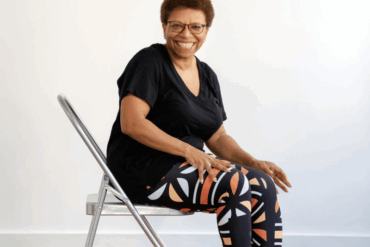After what can feel like a long, dark Winter, the arrival of Spring signals a time of reawakening. We see it around us in nature with changes in the light, buds appearing on trees and shoots emerging from the soil. One of my favourite signs is when the blossoms are on the cusp of blooming. Here in the western hemisphere, where I am writing this from, we usually notice the days beginning to get longer during January with a definite shift occurring in February. With this is mind, it is interesting to note that though we may usually associate March with the start of Spring, in the Chinese lunar calendar, Spring begins on or around 4th February each year (known as Lichun – ‘Start of Spring’).
In Traditional Chinese Medicine, the pair of organs associated with the season of Spring are the Liver (yin organ) and Gallbladder (yang organ) and the element is Wood. Just as Spring is about rebirth and renewal, so is the Wood element, which is also connected to our vision and imagination.
Found in the upper right side of the abdomen, both the liver and gallbladder play important roles in the digestive system. On a physical level, the liver is the body’s main organ of detoxification with just a few of its duties including the cleaning of toxins from blood, metabolising proteins, carbohydrates and fats, producing bile and regulating the amount of blood in the body. The gallbladder, located just under the liver, stores bile which helps to break down fats.
Described as ‘the General of the army’, the Liver is a very important organ in TCM. From an energetic perspective, it is responsible for the smooth flow of Qi (energy), emotions and blood through the body, therefore allowing us to create and execute change. It is also the organ most effected by excess stress. Meanwhile, the Gallbladder is linked to our ability to follow our own path without being deterred by outside influences.
The Liver and Gallbladder Meridians
The Liver meridian begins at the big toe and travels along the insides of the legs, passing the Liver and Gallbladder before continuing upwards to the lungs, chin and lips, entering the top of the head through to the eyes. The Gallbladder meridian begins at the outer corner of the eye and travels in a downward direction along the ribs, waist, pelvis and outside of the legs, all the way to the outside of the fourth toe. (For anyone who may have had their gallbladder removed, it is worth knowing that the meridian lines of an organ that has been removed still remain.)
Anger is the primary emotion associated with the Liver. As a consequence, a few ways imbalanced Liver Qi may appear are as mood swings, irritation, aggression, frustration, menstrual cramps, headaches and finding change difficult. When Liver and Gallbladder Qi is balanced we can feel more emotional calm and empathy, as well as a greater sense of discernment. Also, we can feel less weighed down by the day-to-day stresses that come our way.
The energy of Spring can encourage us to be proactive in creating positive growth and expansion in our lives. This is an ideal time you ask yourself: ‘What do I want to grow (more of) in this season and in my life?’
Acupressure to Support Liver Qi
Taichong, or Liver 3 (also known ‘Supreme Rushing’ or ‘Great Surge’), is the third point along the Liver meridian. As well as supporting the flow of Liver Qi, a few other reported benefits of stimulating this point include easing digestion, insomnia, headaches, PMS symptoms and irritability, and regulating menstruation.
To locate Liver 3, place a finger on the spot where your big toe and second toe meet. From here, slide your finger back about an inch or so until you find the depression just before the point where the two bones meet. (If it feels slightly tender when you press into this point then you’ve found the right spot.) Press the tip of your finger or thumb into this depression on each foot using light to moderate pressure for between thirty seconds and two minutes. You can also massage in a gentle circling motion here. Allow your breath to be slow and steady while you do this.
Yin Yoga for the Liver – Dragonfly Pose
Sit on the ground with your back straight and your legs extended. You can sit on a block or folded blanket here if this feels more comfortable for your lower back. Take your legs apart, as wide as feels comfortable for your hips. Bring your upper body forward. Come as far forward as your body will comfortably allow without forcing or straining.
If you would like to add some support:
– You may wish to rest your forearms or upper body on a bolster. You can also stand a bolster upright or stack yoga bricks to a suitable height in front of you to rest your forehead on.
– Placing a rolled up blanket or yoga bricks behind each knee can help to create more ease for your hamstrings if they are feeling tight.
Dragonfly Pose can also be practised lying down on your back with your legs up the wall.
Remain here for three to five minutes. To exit your Dragonfly Pose, gently uncurl back up to sitting tall.



